Every day, more than 100 million people rely on bridges to reach schools, jobs, hospitals, and loved ones. Beyond concrete and steel, bridges symbolize our determination to overcome obstacles, whether rivers, valleys, or seas. They’re not just engineering marvels; they’re lifelines.
At Remitly, we understand the power of connection. Just as a bridge links two places, our mission is to help immigrants stay connected to their families and communities across borders. And when you look closely at the world’s most impressive bridges, you’ll see more than engineering. You’ll see culture, history, and human creativity at work.
What makes a bridge truly impressive?
Not every bridge earns the title of “impressive.” To stand out, a bridge has to be more than practical; it needs to inspire awe and bring people together.
Engineering innovation meets architectural beauty
Many bridges are celebrated for the way they overcame natural challenges; their engineers take pride in solving problems others thought impossible. Some bridges are made possible by seemingly small breakthroughs, like using lighter materials or designing for extreme weather. These projects often introduce new technologies that become blueprints for future construction.
Some bridges are unforgettable because they look like works of art. Their curves, towers, and lighting make them landmarks that people photograph, paint, and write about. A visually striking bridge doesn’t just connect two sides; it becomes part of a city’s identity, appearing on postcards and in movies.
Cultural and historical significance
Bridges often reflect the history of the communities they serve. From memorials of resistance to medieval trade routes and modern migration paths, bridges symbolize continuity and human ambition across generations. They remind us of the people who lived, worked, and dreamed before us.
An impressive bridge can transform an entire region. Shortening travel times creates new opportunities for work, education, and cultural exchange. Local economies often flourish when communities are no longer cut off by rivers or valleys.
Bridges also influence tourism. People travel from across the globe to walk the Brooklyn Bridge or photograph the Golden Gate, proving that infrastructure can be a destination in itself.
Bridges through history: from stone to steel to smart bridges
Humanity’s relationship with bridges spans thousands of years. Each era left behind structures that reveal technical ability and the values of the time.
- Roman engineers perfected the use of arches, creating stone bridges that still stand today. Built with carefully cut stones fitted so tightly that mortar wasn’t needed, they showcase remarkable craftsmanship. Many Roman bridges also served as aqueducts, carrying water to growing cities.
- In medieval Europe, bridges often had defensive as well as practical roles. Fortified with towers, gates, or chapels, they acted as checkpoints for travelers and merchants. By the Renaissance period, aesthetics became as important as function, with bridges like Florence’s Ponte Vecchio in Italy blending architecture and commerce.
- The Industrial Revolution introduced new materials like cast iron and steel, making longer spans possible. Britain’s Iron Bridge (1779) marked a turning point, and soon suspension and railway bridges reshaped travel.
- Modern bridges are designed with sustainability and resilience in mind, using recycled materials and sensors for real-time monitoring. Smart bridges can detect stress, weather changes, and potential weaknesses so that engineers can fix problems before they become dangerous to users.
Ancient engineering that still inspires
Before steel cables and computer modeling, ancient builders relied on ingenuity and determination. Some of their creations remain standing thousands of years later, proving that impressive bridges don’t always need modern technology.
Pont du Gard, France
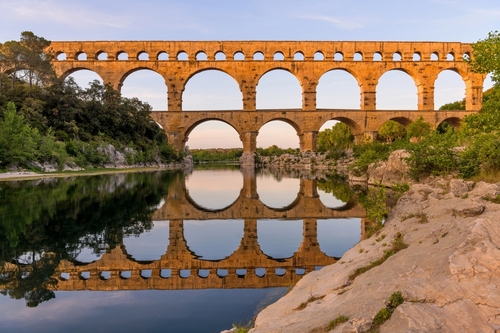
Built around 50 AD, the Pont du Gard was part of a Roman aqueduct system carrying water across the Gardon River. At 160 feet tall, with three tiers of arches, it remains one of Rome’s best-preserved engineering feats. The stones were cut so precisely that no mortar was required.
This UNESCO World Heritage Site still amazes visitors with its scale and elegance. After 2,000 years, it stands strong against floods and weather, proving Roman skill.
Alcántara Bridge, Spain
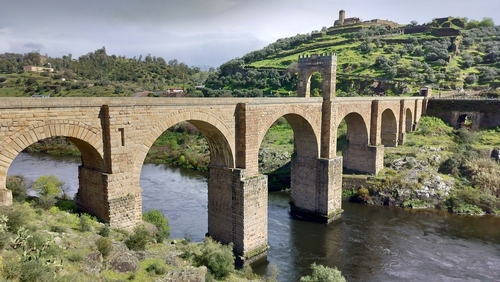
Completed in 106 AD, the Alcántara Bridge spans the Tagus River in western Spain. Commissioned by Emperor Trajan, it served as a vital link for trade and military movement. Its architect, Caius Iulius Lacer, left an inscription declaring it his life’s work.
Remarkably, the bridge has withstood floods, wars, and centuries of use, even surviving partial destruction before careful restoration. Standing on its stone pathway, you can almost picture travelers crossing nearly 2,000 years ago.
Suspension bridge pioneers
Suspension bridges transformed how people crossed great distances. With their long spans and soaring towers, they became more than practical connections; they were bold statements of modernity.
Brooklyn Bridge, New York
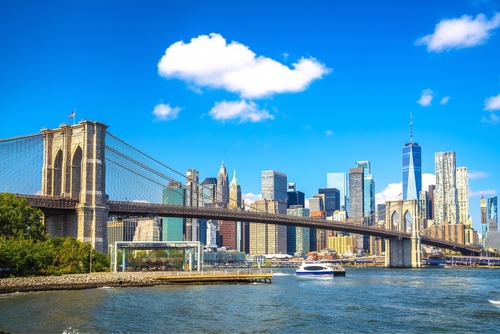
Completed in 1883, the Brooklyn Bridge was the longest suspension bridge of its time. Its construction took 14 years and the dedication of the Roebling family. Innovative techniques like pneumatic caissons allowed its stone towers to rise from the riverbed.
Today, the Brooklyn Bridge is one of New York’s best-known landmarks. Commuters and tourists cross it daily, enjoying sweeping views of Manhattan. Its cultural significance runs deep, inspiring writers, artists, and filmmakers.
Golden Gate Bridge, San Francisco
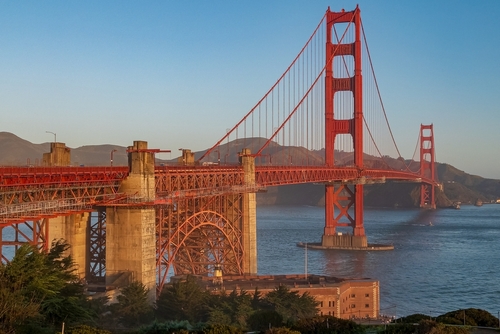
Opened in 1937, the Golden Gate Bridge is instantly recognizable thanks to its Art Deco design and “International Orange” paint. Engineers overcame tides, fog, and winds to complete it, introducing safety measures like hard hats and a protective net that saved workers’ lives.
For decades, the Golden Gate held the record for the longest suspension span. Beyond engineering, it’s a cultural icon, representing San Francisco worldwide.
Modern cable-stayed marvels
Cable-stayed bridges are newer than suspension spans, but they’ve quickly become celebrated worldwide.
Millau Viaduct, France
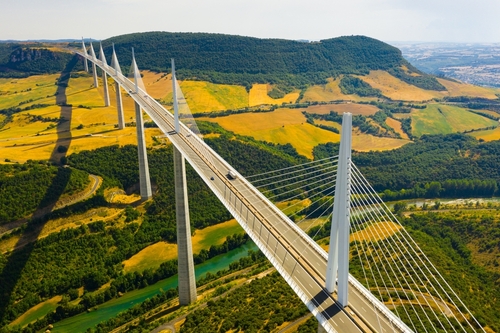
Soaring 1,125 feet above the Tarn Valley, taller than the Eiffel Tower, the Millau Viaduct was designed by engineer Michel Virlogeux and architect Norman Foster. It blends advanced engineering with graceful design, showing how science and art can meet.
Built with minimal disruption to the valley, it preserves the surrounding landscape. Drivers often describe crossing it as flying above the clouds, a rare mix of function and wonder.
Øresund Bridge, Denmark–Sweden
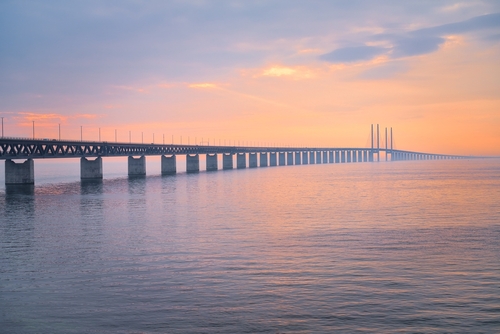
Part bridge, part tunnel, the Øresund links Copenhagen and Malmö. Opened in 2000, it overcame several complex challenges. It allows ships to pass through the strait, planes to land at nearby Copenhagen Airport, and cars and trains to cross between nations.
By cutting travel times dramatically, it strengthened economic, cultural, and even social ties between Denmark and Sweden. Its impact proves that a bridge truly transforms a region.
Architectural beauty meets function
Some bridges invite people to stop, admire, and even gather. These are designs where engineering meets artistry.
Chengyang Bridge, China
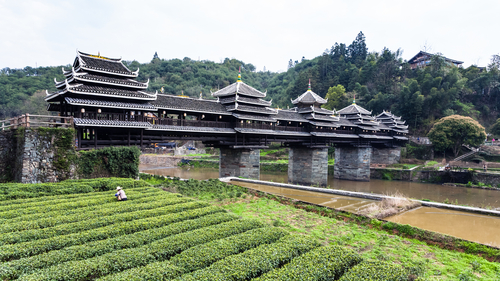
Built in 1912, Chengyang Bridge is a masterpiece of the Dong minority architecture. Made entirely of wood, it uses no nails or bolts. Instead, its beams are carefully fitted together, demonstrating centuries-old craftsmanship.
Chengyang houses pavilions and corridors where locals gather, turning the bridge into a community hub. Festivals, markets, and daily conversations all take place under its sweeping roof.
Helix Bridge, Singapore
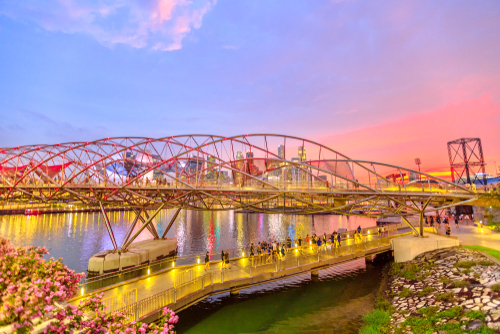
Opened in 2010, the Helix Bridge was inspired by the structure of DNA. Its stainless-steel double helix twists across Marina Bay, illuminated at night with energy-efficient LED lights.
The bridge also offers multiple viewing platforms, giving pedestrians panoramic views of the city skyline. Designed with sustainability in mind, it reflects Singapore’s forward-looking approach to blending technology, beauty, and environmental care.
Record-breaking engineering feats
Some bridges make history simply by being the biggest, longest, or most resilient.
Danyang-Kunshan Grand Bridge, China
Spanning 102 miles, this is the world’s longest bridge. Built in just four years, it carries high-speed trains over rivers, rice paddies, and lakes between Shanghai and Nanjing.
The logistics were staggering, with tens of thousands of workers involved. Construction teams had to deal with wetlands, shifting soil, and the sheer length of the project. The fact that it was finished so quickly is a testament to careful planning and determination.
Akashi Kaikyo Bridge, Japan
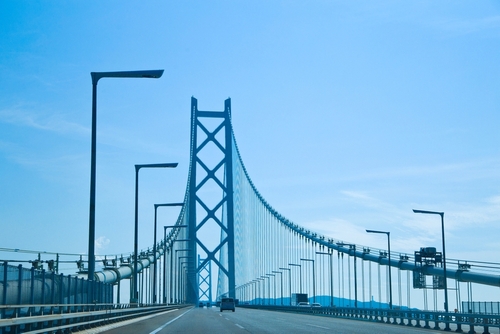
Known as the “Pearl Bridge,” the Akashi Kaikyo is one of the world’s longest suspension bridges, stretching nearly two miles. Built in an earthquake-prone region, it was designed to withstand winds up to 180 mph and tremors as strong as magnitude 8.5.
Construction was tested by the 1995 Kobe earthquake, which shifted one of its towers by nearly three feet. Instead of halting the project, engineers adapted and finished the bridge, making it even stronger.
Beyond traditional transportation
Not all bridges are about cars or trains. Some are designed for pedestrians, while others even help wildlife move safely.
Pedestrian-only icons
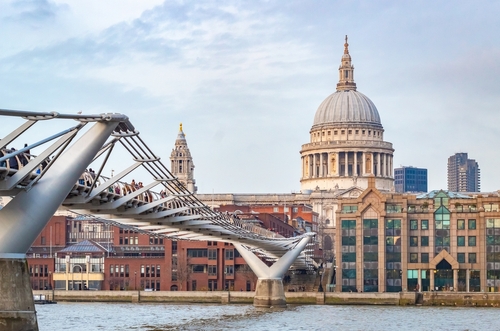
London’s Millennium Bridge offers sweeping views of St. Paul’s Cathedral. Venice’s Rialto Bridge, built in the 16th century, has long served as both a crossing and a marketplace. These landmarks bring locals and visitors together. Walking across them can be just as meaningful as driving, especially when history and culture are built into the design.
Wildlife crossings

In places like the Netherlands and Canada, “green bridges” covered with soil and grass let animals cross highways safely. They preserve ecosystems while also protecting drivers.
They may not look like traditional bridges, but they solve a real problem by creating safe paths for deer, bears, and smaller creatures.
Bridges as community spaces
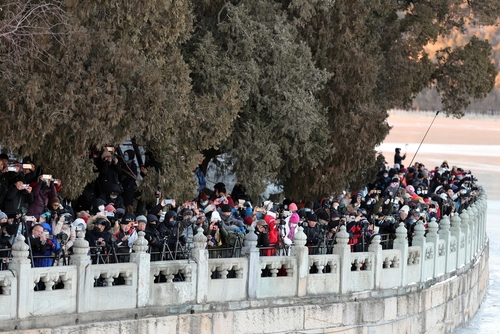
Some bridges double as gathering places. In rural China, covered bridges host festivals and social events. In Europe, stone bridges sometimes serve as stages for music or markets. These examples remind us that bridges can also be about creating spaces that bring people together, no matter the town or city.
Sustainability and the future of bridge design
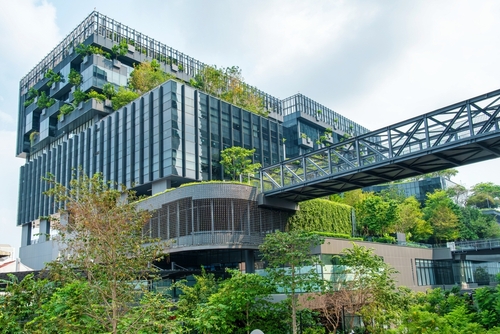
As environmental challenges grow, bridges are being reimagined to meet the needs of both people and the planet. Engineers now use recycled steel, bamboo composites, and self-healing concrete to reduce waste and extend lifespans. These choices lower environmental impact while cutting long-term costs.
Lots of new bridges now consider nature in their design. Wildlife crossings, green roofs, and solar lighting reduce ecological impact, while some reconnect habitats once divided by highways. This blending of human and environmental needs reflects a stronger commitment to sustainability in civil engineering.
Such innovations matter, as climate change affects where and how bridges are built. By focusing on greener solutions, engineers create structures that future generations can rely on.
Bridges transforming communities
By connecting isolated regions or international borders, bridges open doors to new opportunities. The Øresund Bridge cut travel time between Denmark and Sweden from hours to minutes. As a result, commuting between the two countries skyrocketed, leading to new jobs and businesses. By making cross-border work easier, communities become more connected and prosperous.
Bridges like the Golden Gate attract millions of visitors each year. This tourism supports local businesses, from cafes to tour companies, ensuring the community thrives. At the same time, older bridges like the Alcántara preserve cultural heritage, connecting people to their past.
From Roman aqueducts to futuristic cable-stayed designs, bridges tell stories of resilience, culture, and human ambition. They’re connections that shape our lives—in the past, present, and future.
FAQs
How long does it take to build an impressive bridge?
Simple bridges may take a couple of years, while complex projects such as the Øresund Bridge require five years or more. Weather, terrain, and available technology all play a role in the time needed.
What makes some bridges more expensive than others?
Costs depend on length, materials, and location. For example, suspension bridges require costly high-strength cables, while water crossings need specialized techniques.
How do engineers ensure bridges can withstand natural disasters?
Modern bridges are built with flexible designs, aerodynamic shapes, and corrosion-resistant materials. Japan’s Akashi Kaikyo Bridge can endure earthquakes up to magnitude 8.5 and winds of 180 mph.
Why do some bridges become tourist attractions while others don’t?
Iconic bridges combine engineering, beauty, and cultural importance. The Golden Gate’s Art Deco design and San Francisco setting make it irresistible to visitors, while the Brooklyn Bridge offers historical significance and unbeatable skyline views.
How has bridge technology changed over the past century?
Today’s bridges use computer modeling, GPS precision, and high-strength materials like carbon fiber. Environmental sustainability now plays a key role, influencing both materials and construction methods.